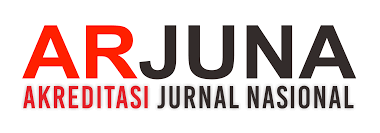Seblak as Comfort Food and Cultural Identity of Generation Z
A Phenomenological Approach
DOI:
https://doi.org/10.24114/edukasikultura.v12i2.69675Keywords:
Seblak Snacks, Generation Z, Phenomenological , comfort food , culture identityAbstract
Seblak, a typical Sundanese snack made from wet crackers with a spicy taste, has now become part of popular culture favored by Generation Z. Although many previous studies have examined seblak from culinary, economic, and product promotion perspectives, studies that highlight the social meaning, cultural identity, and gender dimensions in seblak consumption are relatively limited. This study aims to explore the meaning of seblak consumption among Generation Z using Alfred Schutz's phenomenological approach. Data were obtained through in-depth interviews with eight informants in Bandung City who were selected purposively. The results show that seblak is not only interpreted as spicy and inexpensive food, but also as comfort food that functions as a stress reliever, a means of strengthening social interaction, and a symbol of Sundanese cultural identity. Furthermore, a gender dimension also emerged, where seblak consumption by men is often associated with shifts in masculinity. This research contributes to the enrichment of cultural communication studies and food studies, particularly regarding how Generation Z constructs meanings about traditional foods in the era of social media.References
Afriani, M., Pratama, T. 2022. Pengaruh Cita Rasa dan Variasi Menu Terhadap Tingkat Kepuasan Konsumen di Rumah Makan Aneka Seblak Sei Panas Kota Batam. Jurnal Mata Pariwisata 01 (02).55-61.
Ariestiningsih, E.S., Syarifah, D.F. 2024. Factors That Cause Unhealthy Eating Behavior in Generation Z of Indonesia : A Case Study. Formosa : Journal of Applied Science 3 (1). 413-428.
Atteng, S,P., Nana, F.M.A, Kamilla, R., Alliyatussadah, I., Asih, R.S. 2021. Tren Kuliner Seblak Sebagai Faktor Pendukung Perekonomian Masyarakat Milenial. De Cive : Jurnal Penelitian Pendidikan Pancasila dan Kewarganegaraan 1 (3).73-78.
Azzahra, A.F., Aryani, D.I. 2023. Overview of The Promotion of Seblak SMES Culinary Products Through A Consumer Preference Apporach (Case Study : Seblak Seuhah) Gastronary (Gastronomy and Culinary Art) 2 (1). 17-21.
Basoni, S. (2024). Seblak Disebut Makanan Tak Maskulin, Memicu Perdebatan. Retrieved from: https://food.detik.com/info-kuliner/d-7470547/seblak-disebut-makanan-tak-maskulin-memicu-perdebatan
Creswell, J. W. (2013). Research Design (Pendekatan Kualitatif, Kuantitatif, dan Mixed) (Ketiga). Pustaka Pelajar.
Creswell, J. W. (2018). 30 Keterampilan Esensial untuk Peneliti Kualitatif (R. Kusmini, Ed.). Pustaka Pelajar.
Fischler, C. (1988). Food, Self and Identity. Social Science Information, 27(2), 275–292.
Hidayati, N. (2020). Culinary Heritage and Local Identity: The Case of Seblak in Bandung. Journal of Indonesian Culinary Studies, 5(2), 45-58.
Intani, R.2014. Kiat Penjual Makanan Tradisional dalam Menembus Pasar. Patanjala 6 (2). 315-328.
Kriyantono, R. (2020). Teknik Praktis Riset Komunikasi Kuantitatif dan Kualitatif (2nd ed.). Prenadamedia Group.
Kuswarno, E. (2009). Fenomenologi (Konsepsi, Pedoman, dan Contoh Penelitian). Widya Padjajaran.
Maulydia, Y. Hidayat, D., Purwadhi. 2023. Branding Produk Seblak Melalui Marketplace dan Instagram. Jurnal Communio : Jurnal Ilmu Komunikasi 12 (1).13-25.
Mulyana, D. (2020). Metodologi Penelitian Kualitatif (Paradigma Baru Ilmu Komunikasi dan Ilmu Sosial Lainnya) (P. Latifah, Ed.; Revisi). PT Remaja Rosdakarya.
Sejarah dan Sosial. 2025. Sejarah Seblak, Camilan Klasik Sunda hingga Kuliner Kekinian Favorit. Retrieved From : https://kumparan.com/sejarah-dan-sosial/sejarah-seblak-camilan-klasik-sunda-hingga-kuliner-kekinian-favorit-24qSVtlWhoP/full
Probyn, E. (2010). Carnal Appetites: FoodSexIdentities. London: Routledge.
Rozin, P. (2005). The Meaning of Food in Our Lives: A Cross-Cultural Perspective on Eating and Well-Being. Journal of Nutrition Education and Behavior, 37(2), 107–112.
Sugiah, Awaludin,A.A., Mar’atiningsih, L., Sulhan, M.H., Mutmaina, G.N.
Mamay, Nurisari.,A., Utari,M.R., Leona, D. 2025. Gambaran Kadar Trigriserida Pada Mahasiswa Penikmat Seblak di Kampus Stikes Karsa Husada Garut. Jurnal Riset Ilmu Kesehatan Umum 3(1). 82-96.
Tya Eka Yulianti. 2023. Mengenal Sejarah Asal Usul Seblak Khas Bandung. Retrieved From : https://www.detik.com/jabar/kuliner/d-6578953/mengenal-sejarah-asal-usul-seblak-khas-bandung
Yasyi, D. N. (2020, April 26). Sejarah Cireng Bandung dan Nilai Budaya di Belakangnya. Https://Www.Goodnewsfromindonesia.Id/2020/04/26/Sejarah-Cireng-Bandung-Dan-Nilai-Budaya-Di-Belakangnya. https://www.goodnewsfromindonesia.id/2020/04/26/sejarah-cireng-bandung-dan-nilai-budaya-di-belakangnya
Downloads
Published
How to Cite
Issue
Section
License
Copyright (c) 2025 Rostika Yuliani, Lu’lu Mutia, Xaverius Alberto Lartutul, Sa’adatul Aliyah, Mariani

This work is licensed under a Creative Commons Attribution 4.0 International License.

This work is licensed under a Creative Commons Attribution 4.0 International License
Authors who publish with this journal agree to the following terms:
- Authors retain copyright and grant the journal right of first publication with the work simultaneously licensed under Creative Commons Attribution 4.0 International License that allows others to share the work with an acknowledgement of the work's authorship and initial publication in this journal.
- Authors are able to enter into separate, additional contractual arrangements for the non-exclusive distribution of the journal's published version of the work (e.g., post it to an institutional repository or publish it in a book), with an acknowledgement of its initial publication in this journal.Penulis.
- Authors are permitted and encouraged to post their work online (e.g., in institutional repositories or on their website) prior to and during the submission process, as it can lead to productive exchanges, as well as earlier and greater citation of published work (Refer to The Effect of Open Access).



